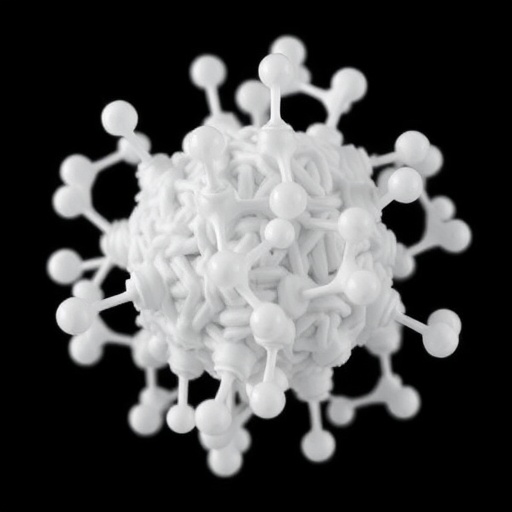Recent advancements in nanotechnology have underscored the potential of utilizing natural extracts for synthesizing nanoparticles with remarkable properties. A groundbreaking study led by researchers Al-Bishri and Al-Habeeb has revealed that extracts from the plant Alkanna tinctoria can be harnessed to produce silver-zinc oxide (Ag-ZnO) nanoparticles. This synthesis addresses not only the efficiency but also the environmental sustainability of nanoparticle production methods. The researchers explored this innovative avenue in depth, analyzing its characteristics, antimicrobial properties, and antibiofilm activities.
The study delves into the biosynthesis of nanoparticles, which has emerged as a promising approach in various applications, including medicine, electronics, and environmental remediation. Traditional methods of nanoparticle synthesis often employ hazardous chemicals, raising concerns about toxicity and environmental impact. In contrast, the utilization of plant extracts offers a safer alternative that is in line with green chemistry principles. The choice of Alkanna tinctoria as a bioresource is significant due to its historical use in traditional medicine and the numerous bioactive compounds it contains.
Characterization of the synthesized Ag-ZnO nanoparticles is crucial to understanding their morphological and structural properties. The research employed advanced techniques such as Transmission Electron Microscopy (TEM) and X-ray Diffraction (XRD), revealing nanoparticles that exhibit a uniform size distribution and specific crystalline structures. TEM images illustrated that these nanoparticles ranged from 10 to 50 nanometers in diameter, positioning them within the optimum size range for effective antimicrobial activity. This detailed characterization ensures that the synthesized nanoparticles possess the desired properties for various applications in healthcare and beyond.
Moving beyond physical characterization, the study meticulously investigates the antimicrobial efficacy of the Ag-ZnO nanoparticles against various bacterial strains. This research is especially relevant in the face of rising antibiotic resistance, where conventional treatments are becoming less effective. The researchers conducted in vitro tests, which demonstrated that the nanoparticles exhibited potent antibacterial activity against both Gram-positive and Gram-negative bacteria. The dual-action mechanism of silver and zinc oxide significantly enhances the overall antimicrobial effect, making these nanoparticles a promising candidate for use in antibiotic formulations.
In addition to their antimicrobial properties, the study evaluates the antibiofilm activities of the Ag-ZnO nanoparticles. Biofilms are clusters of bacteria that adhere to surfaces, creating protective environments that render them resistant to conventional treatments. The ability of these nanoparticles to disrupt biofilm formation offers a revolutionary step forward in combating persistent infections that are notoriously difficult to treat. The findings indicate that the Ag-ZnO nanoparticles effectively inhibit biofilm development, making them a strategic asset in clinical settings, particularly for medical devices and implants.
The diverse applications of Ag-ZnO nanoparticles extend well beyond antimicrobial treatments. The encapsulation of these nanoparticles in polymer matrices could lead to the development of innovative coatings that possess long-lasting antibacterial properties. These bioactive coatings could be applied to hospital surfaces, surgical instruments, and even consumer products, significantly reducing infection rates and enhancing overall public health.
Furthermore, the implications of this study go beyond immediate medical applications. Given the heightened awareness surrounding environmental issues, the synthesis of nanoparticles using plant extracts aligns with sustainable development goals. The use of Alkanna tinctoria not only reduces reliance on toxic chemicals but also promotes the utilization of renewable resources. This trend of exploring natural biosources for industrial applications holds the potential for significantly reducing the ecological footprint associated with nanoparticle production.
The researchers emphasize the need for further exploration regarding the mechanisms behind the enhanced antimicrobial and antibiofilm activities observed. Understanding these mechanisms at a molecular level could lead to optimizations in the synthesis process, allowing for the fine-tuning of nanoparticle properties to suit specific applications. Future research may also explore the potential synergistic effects of combining Alkanna tinctoria extracts with other bioactive compounds, thereby broadening the scope of its applications.
Moreover, the translation of laboratory findings to real-world practices remains a crucial aspect of the research. The study lays the foundation for subsequent investigations focusing on biocompatibility and toxicity assessments, essential parameters before considering the clinical application of these nanoparticles. Establishing safety profiles will further reinforce the viability of Ag-ZnO nanoparticles as a transformative solution in contemporary healthcare challenges.
As the scientific community continues to explore plant-based nanoparticle synthesis, the findings presented by Al-Bishri and Al-Habeeb signify a step towards harmonizing technological advancement with ecological sustainability. The exploration of Alkanna tinctoria opens new avenues for interdisciplinary research, combining plant biology, materials science, and medicinal chemistry. This synergy could catalyze the development of innovative strategies to address pressing global health issues.
Ultimately, the journey from raw botanical resource to advanced nanotechnology highlights the inherent adaptability of modern scientific approaches. As researchers delve deeper into the therapeutic possibilities of naturally-derived materials, they uncover not only novel solutions but also forge a pathway towards a more sustainable and health-conscious future.
In summary, the synthesis of Ag-ZnO nanoparticles using Alkanna tinctoria presents a compelling case for the integration of traditional knowledge with contemporary science. By enhancing our understanding of these nanoparticles’ properties, the research paves the way for their future applications in healthcare, environmental science, and beyond, underscoring the vital role of nature in scientific innovation.
Subject of Research: Biomass synthesis of Ag-ZnO nanoparticles using Alkanna tinctoria extracts.
Article Title: Alkanna tinctoria extract-mediated biomass synthesis of Ag-ZnO nanoparticles: characterization, antimicrobial and antibiofilm activities.
Article References:
Al-Bishri, W.M., Al-Habeeb, R.S. Alkanna tinctoria extract-mediated biomass synthesis of Ag-ZnO nanoparticles: characterization, antimicrobial and antibiofilm activities.
Int Microbiol (2025). https://doi.org/10.1007/s10123-025-00743-7
Image Credits: AI Generated
DOI:
Keywords: Ag-ZnO nanoparticles, Alkanna tinctoria, antimicrobial activity, antibiofilm properties, green synthesis, nanotechnology.




